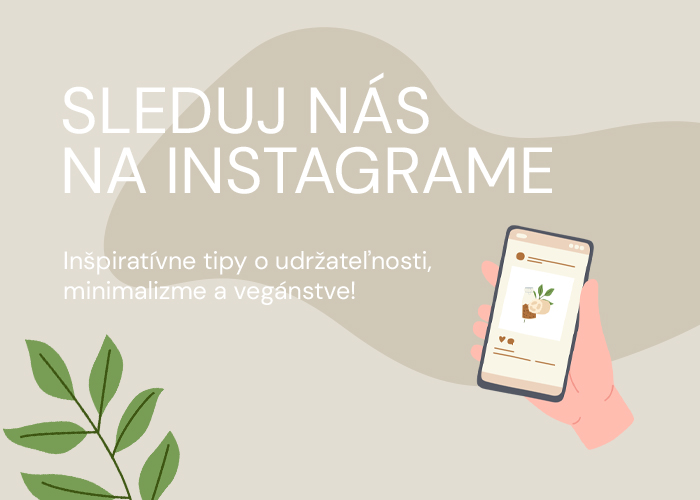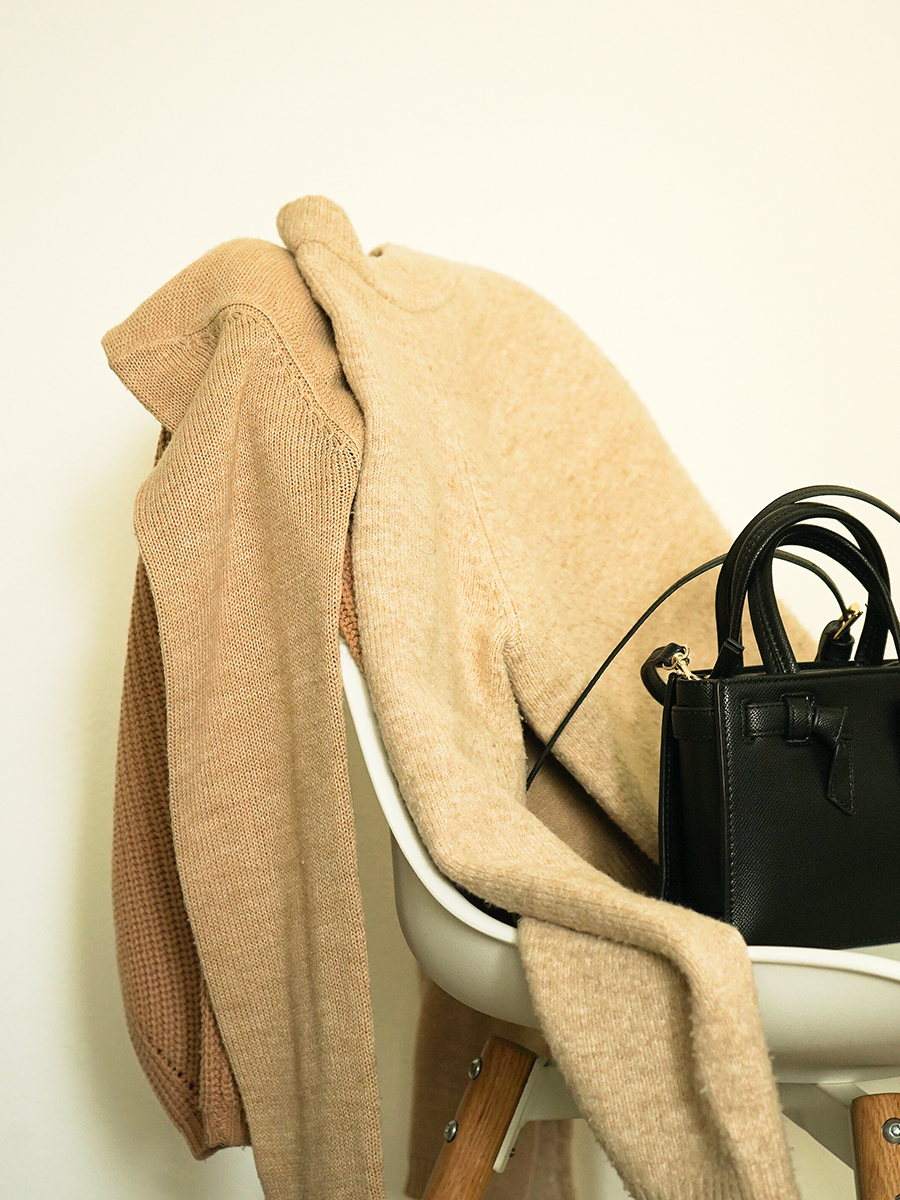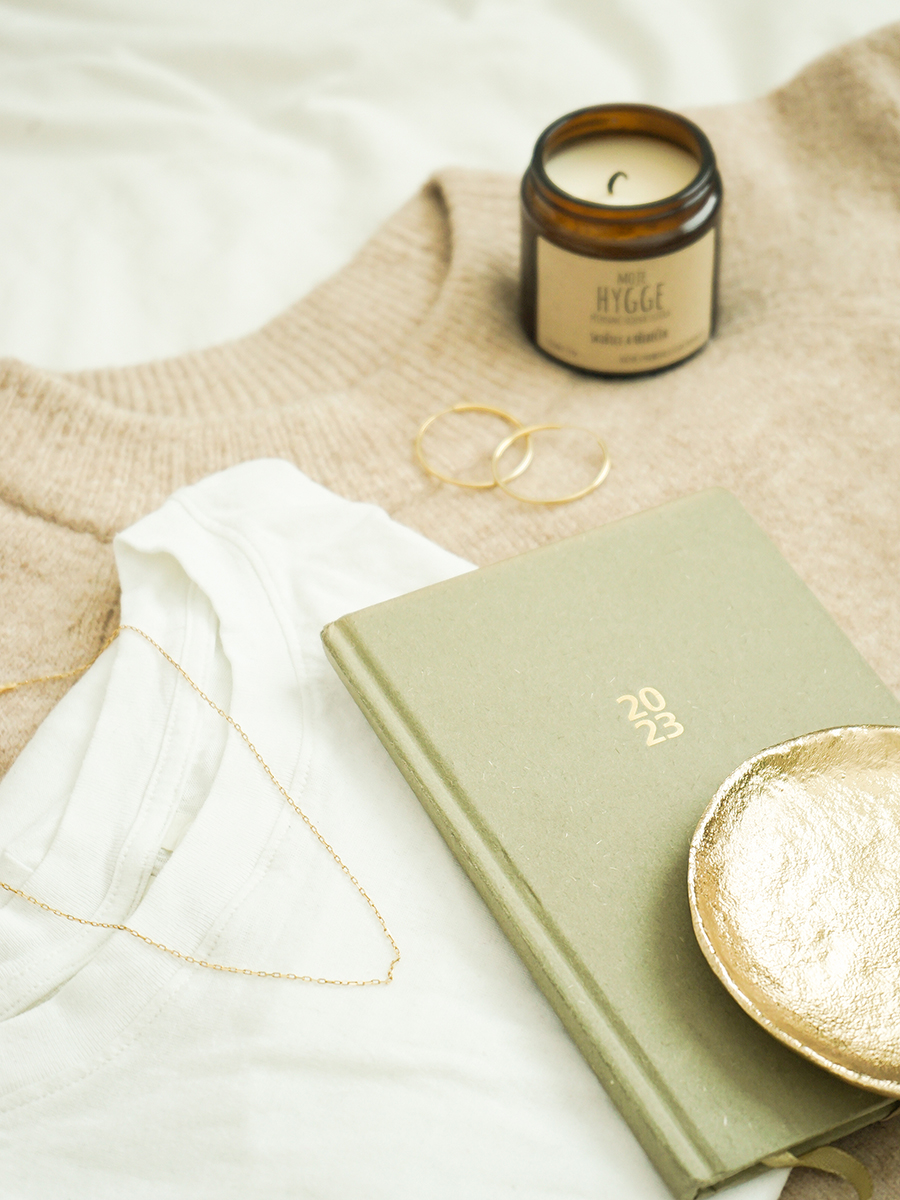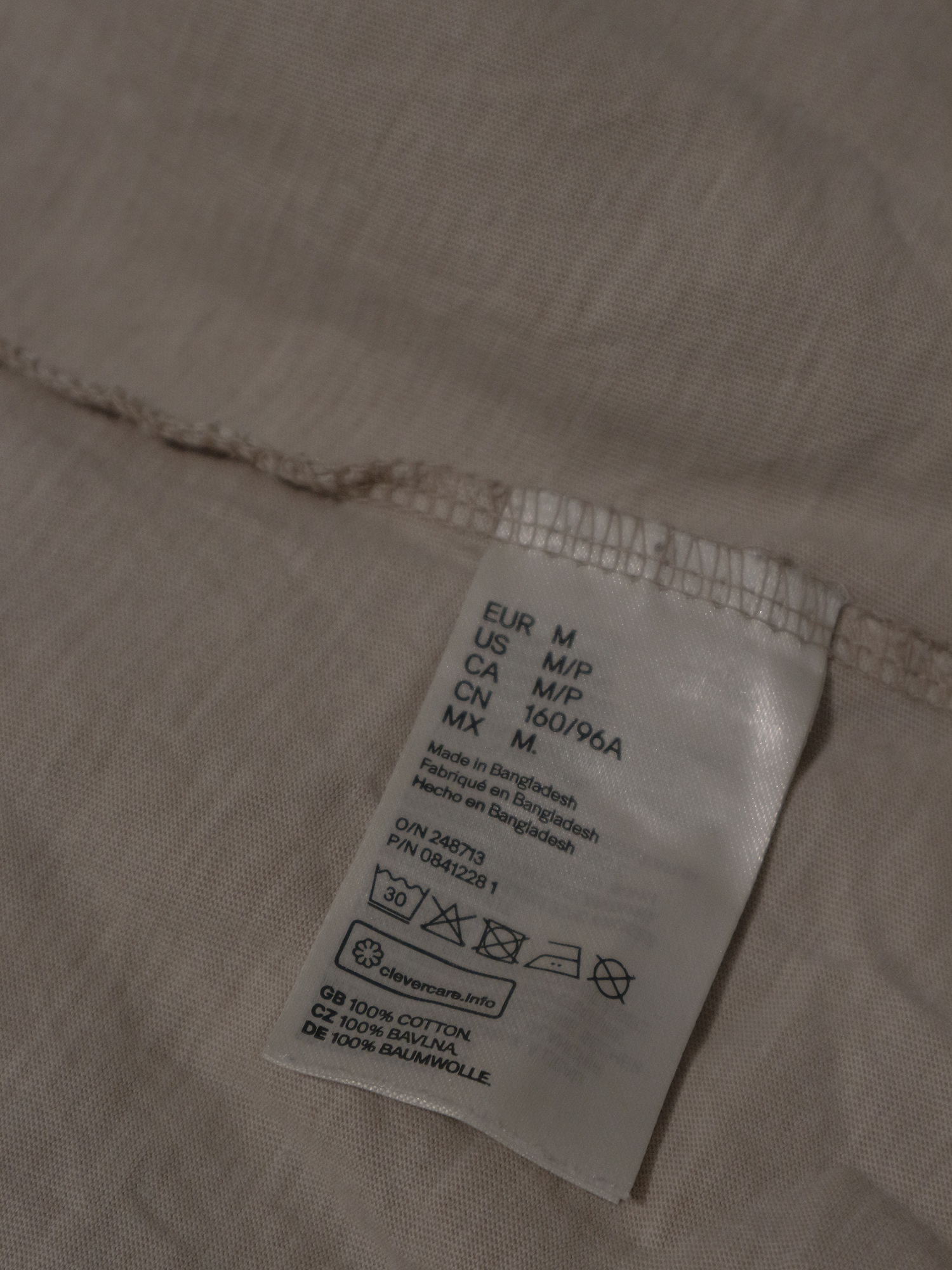
Worst material from which clothing can be made? Polyester. And the best material? Cotton. This is how most people would answer these two questions; and only because of the information on social media, the internet and from regular conversations.
But it’s hard to tell which type of fabric is the worst — because polyester also has its advantages. It dries quickly, keeps its shape for a long time, is easy to wash in a washing machine, is durable and mostly it’s very cheap. However, this is not worth the ecological footprint it leaves behind. That’s why more people are reaching for more sustainable materials — such as cotton or linen. However, even these are not completely innocent; and often hide behind the ugly facts of high water consumption, air pollution or the depletion of land needed for production.
In today’s article, however, I would like to focus on the best of the best — materials that we can say are the most sustainable and have the lowest impact on the environment. And not only that; I will also tell you about their advantages and disadvantages and what to watch out for when shopping.

Organic and recycled cotton
Although we consider cotton to be the best fabric from which clothing can be made, it’s not quite true — cotton cultivation requires huge amounts of water and pesticides that remain in the plant, soil and groundwater; and they continue to pollute the nature. Therefore, it’s much better to reach for organic cotton, which has a much lower ecological footprint. Organic cotton, also referred to as BIO cotton, is grown in “live soil” and free from pesticides and chemical fertilizers, the soil is enriched with natural compost and processed in accordance with international standards.
The main advantage of organic cotton is its low environmental impact; and when you reach for pieces and brands that have a GOTS or Soil Association label, you can be 100% sure that your clothing has been sustainably made. In addition, the fabric is softer, more durable and breathable. Organic cotton also does not cause any allergic reactions. All this, however, is reflected in its price — clothes made from organic cotton can be several times more expensive than from the conventional, mass-grown cotton. Such cultivation also requires more laborious and costly work. This is also the reason why the total market share of organic cotton products is currently less than one percent.
Even more sustainable than organic cotton is recycled cotton. This is obtained by converting the fabric or finished clothing back into a fiber, which can be reused in textile products. In this way, unused scraps or old and unwanted cotton clothes get a new life — and don’t end up in a landfill. The process is also environmentally friendly, as there is no need to re-grow the plant, saving both water and energy.
The main disadvantage of recycled cotton is its reduced quality. To produce a recycled cotton product, it’s first necessary to mechanically sort the collected materials by colour; and the fabrics then travel through a machine that transforms them into yarn and fibers again — creating a relatively high weight on the fiber that can be damaged or torn. And since this process is still relatively new, it’s also costly.

Organic linen
We currently grow flax for flax seed; and thus the fiber is a by-product. Flax as a plant requires a relatively small amount of water and pesticides, and can even grow on poor soil. It’s a naturally strong fiber that is lightweight, withstands high temperatures and absorbs moisture without retaining bacteria.
Although linen itself can be described as sustainable, organic linen is even more environmentally friendly. In its cultivation, more consideration is given to energy and resource saving; and no pesticides or other chemical treatments are used.
Hemp
Hemp is one of the oldest used plants; and is still widely used in cosmetics, construction industry, as food, but also as a material for the production of clothing. Hemp doesn’t need a lot of water, no pesticides and naturally enriches the soil in which it grows. In addition, it needs less space to grow — and we can grow up to three times more hemp fiber than cotton on the same area.

Materials of the future
Thanks to the experiments of many scientists around the world, new materials that are sustainable and environmentally friendly are gradually entering the market and in the attention of people. These include Tencel made from cellulose — it can absorb up to 50% more water than cotton, needs less energy and water to produce, and is antibacterial. The second example is Pinatex, an alternative to leather made of pineapple leaves. Since leaves are a by-product (the plant is grown for fruits), the material is sustainable and reduces the amount of waste produced.

Najhorší materiál, z ktorého môže byť vyrobené oblečenie? Polyester. A najlepší materiál? Bavlna. Asi takto by na tieto dve otázky odpovedala väčšina ľudí; a to vďaka informáciám zo sociálnych sietí, internetu a z bežných rozhovorov.
No je ťažké označiť, ktorý druh tkaniny je najhorší — pretože aj polyester má svoje výhody. Rýchlo schne, dlho drží svoj tvar, ľahko ho vieme vyprať v práčke, je odolný a hlavne veľmi lacný. To však nestojí za ekologickú stopu, ktorú za sebou zanecháva. Preto v poslednej dobe siahame čoraz viac po udržateľnejších materiáloch — ako je bavlna alebo ľan. Avšak ani tie nie sú úplne nevinné; a často sa za nimi skrývajú nepekné fakty týkajúce sa vysokej spotreby vody, znečisťovania ovzdušia alebo vyčerpávanie pôdy potrebnej na produkciu.
V dnešnom článku by som sa však chcela zamerať na tie najlepšie z najlepších — teda materiály, o ktorých môžeme povedať, že sú najviac udržateľné a majú najmenší dopad na životné prostredie. A nielen to; poviem vám aj o ich výhodách a nevýhodách a na čo si pri nakupovaní dávať pozor.

Organická a recyklovaná bavlna
Hoci bavlnu vnímame ako najlepšiu látku, z ktorej môže byť vyrobené oblečenie, nie je to úplne tak — na pestovanie bavlny je potrebné obrovské množstvo vody a pesticídov, ktoré ostávajú v rastline, pôde i podzemných vodách; a tie ďalej znečisťujú prírodu. Preto je oveľa lepšie siahnuť po organickej bavlne, ktorá má oveľa nižšiu ekologickú stopu. Organická bavlna, označovaná aj ako BIO bavlna, je pestovaná v “živej pôde” a bez pesticídov a chemických hnojív, pôda je obohacovaná prírodným kompostom a je spracovaná v súlade s medzinárodnými normami.
Hlavnou výhodou BIO bavlny je jej nízky dopad na životné prostredie; a ak siahnete po kúskoch a značkách, ktoré majú GOTS alebo Soil Association označenie, môžete si byť na sto percent istý, že bolo vaše oblečenie udržateľne vyrobené. Okrem toho je látka jemnejšia, odolnejšia a priedušnejšia. Organická bavlna tiež nespôsobuje žiadne alergické reakcie. To všetko sa však odráža na jej cene — oblečenie z BIO bavlny môže byť až niekoľkonásobne drahšie ako z bežnej, hromadne-pestovanej bavlny. Takéto pestovanie si tiež vyžaduje namáhavejšiu a finančne náročnejšiu prácu. Aj kvôli tomu je v súčasnosti celkový podiel produktov z organickej bavlny na trhu menší ako jedno percento.
Ešte udržateľnejšia ako organická bavlna je recyklovaná bavlna. Tá sa získava premenou látky alebo hotového oblečenia späť na vlákno, ktoré sa môže opätovne použiť v textilných výrobkoch. Takýmto spôsobom dostávajú nevyužité útržky alebo staré a nechcené oblečenie z bavlny nový život — a neskončia na skládke. Proces je tiež šetrný voči životnému prostrediu, pretože nie je potrebné opätovné pestovanie rastliny, šetrí sa vodou i energiou.
Hlavnou nevýhodou recyklovanej bavlny je jej znížená kvalita. Na vytvorenie produktu z recyklovanej bavlny je potrebné najprv mechanicky roztriediť zozbierané látky podľa farby; a textílie potom putujú strojom, ktorý ich opäť transformuje na priadzu a na vlákna — čo vytvára pomerne veľkú záťaž na vlákno, ktoré sa môže zničiť alebo pretrhnúť. A keďže je tento proces stále pomerne nový, je aj finančne náročný.

Organický ľan
V súčasnosti ľan pestujeme pre ľanové semeno; a teda vlákno je vedľajším produktom. Ľan ako rastlina vyžaduje pomerne malé množstvo vody a pesticídov, a dokonca vie rásť aj na nekvalitnej pôde. Je to prirodzene silné vlákno, ktoré je ľahké, vydrží vysoké teploty a absorbuje vlhkosť bez zadržiavania baktérií.
Hoci ľan samotný môžeme označiť ako udržateľný, organický ľan je k prírode ešte šetrnejší. Pri jeho pestovaní sa viac prihliada na šetrenie so zdrojmi i energiou; a nie sú použité žiadne pesticídy či iné chemické ošetrovacie látky.
Konope
Konope patrí medzi najstaršie využívané rastliny; a dodnes má široké využite v kozmetike, stavebnom priemysle, ako potravina, ale aj ako materiál na výrobu oblečenia. Konope nepotrebuje veľa vody, žiadne pesticídy a prirodzene hnojí pôdu, v ktorej rastie. Okrem toho potrebuje menej miesta na rast — a na rovnakej ploche dokážeme vypestovať až trikrát viac konopného vlákna ako bavlneného.

Materiály budúcnosti
Vďaka experimentom mnohých vedcov po celom svete sa na trh a do pozornosti ľudí postupne dostávajú aj nové materiály, ktoré sú udržateľné a šetrné k prírode. K takým patrí napríklad Tencel vyrábaný z celulózy — dokáže absorbovať až 50% viac vody ako bavlna, na produkciu potrebuje menej energie a vody a je antibakteriálny. Druhým príkladom je Pinatex, alternatíva kože z listov ananásovníka. Keďže listy sú vedľajší produkt (rastlinu pestujeme pre plody), materiál je udržateľný a znižuje množstvo vyprodukovaného odpadu.





